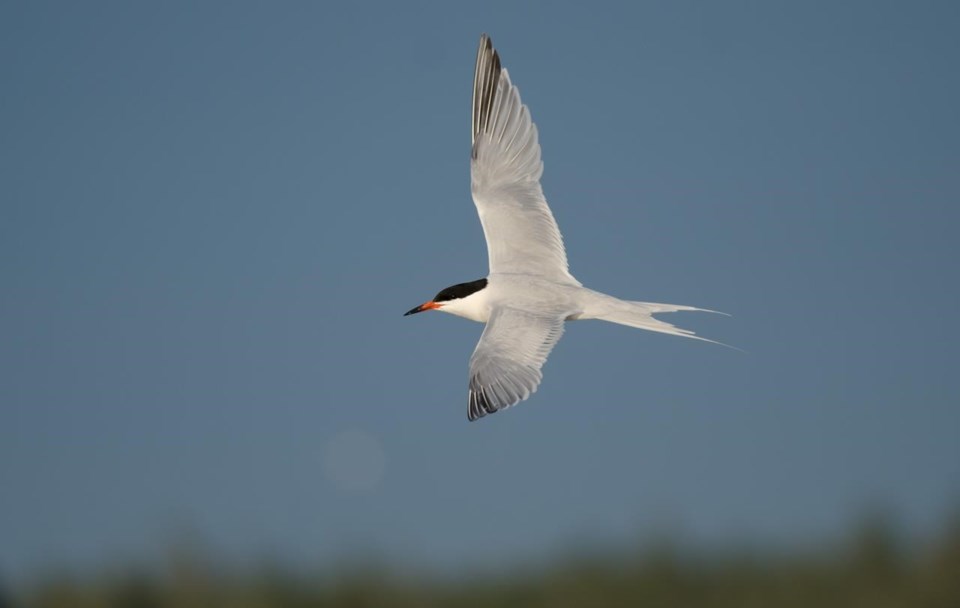HALIFAX — A 13-turbine wind farm recently approved by the Nova Scotia government is worrying federal officials, who say there isn't enough information about what impact the project will have on the endangered roseate tern and other birds.
Nova Scotia's Environment Department approved the Wedgeport Wind Farm, on the province's southwest coast, on May 4. Also on that day, an environment assessment by Environment Canada and the Canadian Wildlife Service became public.
The federal agencies note in their report that 75 per cent of the breeding of the roseate tern population in Canada occurs about 15 kilometres from the proposed wind farm. They say the endangered animals “may be vulnerable” to the turbines as they fly across the project area at Little River Harbour, N.S., seeking food.
The seabirds have a distinctive appearance, with black caps, bills that are red at their base and a forked tail. The Canadian Wildlife Service has reported that their numbers have plunged to the point where the species is considered at risk.
Federal officials also report concerns about other birds, noting that the area's headland — a narrow piece of land that juts out into the water — is home to "known important bird habitats" and is used for resting, refuelling and overwintering. They say shorebirds and ducks move over the area at an altitude that puts them at risk of collision with the turbines, especially at dusk and dawn.
The federal experts say there's insufficient information to assess the project's impacts on birds, and they call for the creation of maps detailing the flight paths of the various species, which would reveal whether they are at risk of collisions with turbines.
John Kearney, an environmental researcher who has used acoustic methods to chart the high densities of bird calls in the Little River Harbour area, says he was disappointed the Progressive Conservative government approved the wind project.
He said in an interview on Monday he remains concerned about the birds dying from exhaustion in an effort to stay away from the huge windmills — or by blunt force trauma if they fly into them.
"Environment Canada is stating, 'There are migratory birds' and 'You need to map them,'" he said. "And once they do that, they will have to show they are taking measures to prevent damage and death as (the birds) pass through the corridor."
Daniel Eaton with Vancouver-based Elementary Energy — the company developing the wind project — wouldn't comment on the specific observations from the federal agencies in the environment assessment his firm commissioned.
In an email, he said the province has laid out conditions for the project, including that studies be produced on the types of birds that live in the area, which he said would inform future conservation measures. The province has also required the company to produce a two-year study on bird and bat mortality caused by the turbines.
"We anticipated receiving approval conditions for the Wedgeport Wind Farm Project environment assessment, which are generally consistent with other wind farm approvals in Nova Scotia and across Canada," he wrote.
The company has previously stated that by 2025 — the potential first year of operation — the project is anticipated to offset 112,750 tonnes of carbon emissions, roughly equivalent to the yearly output of 25,000 gasoline-powered cars.
The company's field survey identified 100 bird species within and outside the project area, and about 16,000 individual birds. Elementary Energy also predicted that the project would lead to about 36 bird deaths a year, citing a model developed in 2016 from Scottish Natural Heritage, an environmental advisory body.
However, Kearney and the Nova Scotia Bird Society have been critical of that model. Kearney and the society have said his acoustic data gives strong, comparative evidence that the proposed farm is in the middle of a migration corridor.
The federal department declined to provide one of the experts for an interview, or further comment.
This report by The Canadian Press was first published May 10, 2023.
Michael Tutton, The Canadian Press




